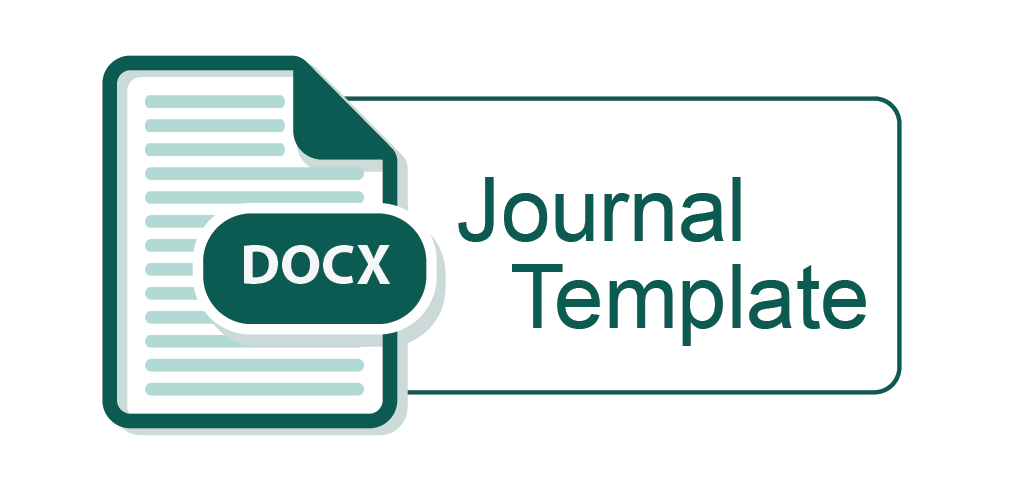Submission Guidelines Instructions to Authors Peer-Review Process Publication Ethics Open Access Article Publishing Charges
Instructions to Authors
Selected Guidelines for Different Studies
ATR recommends that authors prepare their manuscripts following these guidelines, whenever applicable:
- Materials Design Analysis Reporting Framework (MDAR)
- Nature Reporting Life Sciences Research (NPG Reporting Checklist)
- Animal Research: Reporting of In Vivo Experiments (ARRIVE)
- Minimum Information for Biological and Biomedical Investigations (MIBBI)
- Strengthening the Reporting of Genetic Association Studies (STREGA)
- Strengthening the reporting of observational studies in epidemiology (STROBE)
- Preferred Reporting Items for Systematic Reviews and Meta-Analyses (PRISMA)
- Case Reports Guidelines (CARE)
- Standards for Reporting Qualitative Research (SRQR)
- Consolidated Standards of Reporting Trails (CONSORT)
- Standard Protocol Items: Recommendations for Interventional Trials (SPIRIT)
Type of Articles
The Annals of Tropical Research primarily focuses the bulk of its publication on Original Research Articles and Systematic Reviews or Meta-Analyses, comprising approximately two-thirds of its content. This is supplemented by Review Articles (Narrative and Scoping Review), Methods or Technical Notes, and Case reports. Editorials and letters are published infrequently. This balance ensures that the journal remains a research-driven platform while still allowing for scholarly debate and synthesis.
ATR provides a standardized manuscript template for editorial evaluation and peer review. The template is available in the journal sidebar (Journal Template – DOCX) or may be downloaded directly via this link: https://atr.vsu.edu.ph/libraryFiles/downloadPublic/1
Manuscript Structure
Manuscripts must be written in English and formatted double-spaced on one side of A4-sized paper (21 cm x 29.7 cm) with standard margins (2.54 cm). Use Arial font at 12 points and include continuous line numbering. All pages, including tables and figures, should have a page number in the bottom center of the paper.
1. Original Research Article
This pertains to reports of new, unpublished results of original research that advance knowledge in tropical sciences. Includes experimental, field, or laboratory studies with clear methodology and analysis.
- Word limit: ≤ 7,000 words (including abstract, references, tables, and figures).
- Abstract: Must concisely present the Background, Objectives, Methods, Results, and Conclusion in paragraph form (not as separate headings). Limit to ≤ 300 words.
- Keywords: 4–6.
- Main sections: Introduction; Materials and Methods; Results; Discussion; Conclusion.
- Figures/Tables: Maximum of 8.
2. Systematic Review or Meta-Analysis
This synthesizes all available evidence addressing a specific research question using systematic methods, which may include meta-analysis. The manuscript must clearly describe the search strategy, including the criteria for inclusion and exclusion, as well as the quality assessment.
- Word limit: ≤ 8,000 words (including abstract, references, tables, and figures).
- Abstract: Must concisely present the Background, Objectives, Methods (including the search strategy), Results, and Conclusion in paragraph form (not as separate headings). Limit to ≤ 300 words.
- Keywords: 4–6.
- Main sections: Introduction; Methods (search strategy, inclusion/exclusion criteria, quality assessment); Results; Discussion; Conclusion.
- Registration: Authors are encouraged to register protocols in PROSPERO or similar registries.
- Figures/Tables: Flow diagram of study selection (PRISMA) is mandatory; a maximum of 10 tables/figures.
3. Review Article (Narrative or Scoping Review)
This provides a broad overview, synthesis, and critical analysis of literature on a topical issue, concept, or emerging field. Unlike systematic reviews, narrative/scoping reviews are interpretive and do not require exhaustive methods.
- Word limit: ≤ 7,000 words (including abstract, references, tables, and figures).
- Abstract: Unstructured, ≤ 250 words.
- Main sections: Introduction; Thematic/Chronological Review of Literature; Critical Analysis; Knowledge Gaps; Conclusion and Future Directions.
- Figures/Tables: Maximum of 8.
4. Methods or Technical Note
This presents new methods, techniques, tools, or modifications of existing methods with potential broad applicability. Focus is on reproducibility, innovation, and validation.
- Word limit: ≤ 4,000 words (including abstract, references, tables, and figures).
- Abstract: Unstructured, ≤ 250 words.
- Main sections: Introduction; Detailed Method/Technique; Applications; Limitations; Conclusion.
- Figures/Tables: Maximum of 5.
5. Case Report
This describes unique or rare cases in tropical research, including unusual diseases, novel management approaches, or unexpected outcomes. It must highlight its educational or scientific value.
- Word limit: ≤ 4,000 words (including abstract, references, tables, and figures).
- Abstract: Must concisely present the Background, Case Presentation, Outcome, and Conclusion in paragraph form (not as separate headings). Limit to ≤ 250 words.
- Main sections: Introduction; Case Presentation; Discussion; Conclusion.
- Figures/Tables: Maximum of 4 (e.g., clinical images, histology, diagnostic results).
- Patient/Animal Ethics: Must include ethical approval or informed consent statement where applicable.
6. Perspective
This pertains to concise, thought-provoking contributions that offer fresh insights, conceptual advances, or forward-looking perspectives on emerging trends or debates. This is less formal than a review, but evidence-based.
- Word limit: ≤ 4,000 words.
- Abstract: ≤ 250 words abstract.
- Main sections: Brief Introduction; Argument/Insight; Conclusion.
- Figures/Tables: Maximum of 2.
- References: Limited to 20.
7. Opinion or Viewpoint
This is an authoritative, evidence-informed commentary on current issues, policies, or controversies in tropical research. Unlike perspectives, opinions prioritize advocacy or argumentation.
- Word limit: ≤ 4,000 words.
- Abstract: ≤ 250 words abstract.
- Main sections: Flexible (author’s argument supported by evidence).
- Figures/Tables: Maximum of 2.
- References: Limited to 20.
8. Editorial
This is written by the Editorial Board or invited experts. It provides context to current issues, introduces a special issue, or comments on emerging challenges in tropical sciences.
- Word limit: ≤ 2,000 words.
- Abstract: Not required.
- Main sections: Flexible, typically include Introduction, Key Message, and Closing Remarks.
- Figures/Tables: Maximum of 2.
- References: Limited to 15.
9. Correction / Erratum
This addresses errors in a published article that affect clarity, but do not invalidate the findings. It includes author name corrections, data clarifications, or minor factual adjustments.
- Word limit: ≤ 500 words.
- Abstract: Not required.
- Main sections: Clear reference to the original article (with DOI), description of the correction.
- Figures/Tables: Only if necessary to clarify correction.
10. Addendum
This provides important additional information, clarifications, or updates to a previously published article. It must be directly linked to the original publication.
- Word limit: ≤ 1,000 words.
- Abstract: Not required.
- Main sections: Context of original publication; Additional data/analysis/clarification; Conclusion.
- Figures/Tables: Maximum of 2.
References must conform to ATR’s reference style. Figures and tables should be positioned after the reference list, each on its own page and accompanied by appropriate captions. Supplementary materials may be submitted separately in electronic format. Furthermore, ethical considerations must be clearly articulated for any research involving humans, animals, or sensitive data.
The submitted draft must include sections for Acknowledgment, Author Contributions, Funding Sources, Availability of Data and Materials, Ethical Considerations, Competing Interests, and References.
References
All references mentioned in the manuscript should be listed in the reference section of the manuscript. Authors are encouraged to use reference manager software such as Zotero, Endnote, or Mendeley and conform with the APA 7th edition citation and referencing style, with published articles starting Volume 47, Year 2025. Authors are likewise encouraged to use current literature (not more than 10 years) unless these are vital to the study.
For more information and guidance, please refer to this link:
- https://apastyle.apa.org/style-grammar-guidelines/references/examples
- https://apastyle.apa.org/
- https://apastyle.apa.org/instructional-aids/reference-examples.pdf
- https://apastyle.apa.org/
Authors may also refer to the examples below (lifted from the APA 7th Common Reference Example Guide).
Journal Article (Section 10.1)
Edwards, A. A., Steacy, L. M., Siegelman, N., Rigobon, V. M., Kearns, D. M., Rueckl, J. G., & Compton, D. L. (2022). Unpacking the unique relationship between set for variability and word reading development: Examining word- and child-level predictors of performance. Journal of Educational Psychology, 114(6), 1242—. https://doi.org/10.1037/edu0000696
Authored Book (Section 10.2)
Kaufman, K. A., Glass, C. R., & Pineau, T. R. (2018). Mindful sport performance enhancement: Mental training for athletes and coaches. American Psychological Association. https://doi.org/10.1037/0000048-000
Edited Book Chapter (Section 10.3)
Zeleke, W. A., Hughes, T. L., & Drozda, N. (2020). Homecollaboration to promote mind—body health. In C. Maykel & M. A. Bray (Eds.), Promoting mindhealth in schools: Interventions for mental health professionals (pp. 11—). American Psychological Association. https://doi.org/10.1037/0000157-002
Dissertation From a Database (Section 10.6)
Horvath-Plyman, M. (2018). Social media and the college student journey: An examination of how social media use impacts social capital and affects college choice, access, and transition (Publication No. 10937367) [Doctoral dissertation, New York University]. ProQuest Dissertations and Theses Global.
Preprint Article (Section 10.8)
Latimier, A., Peyre, H., & Ramus, F. (2020). A meta-analytic review of the benefit of spacing out retrieval practice episodes on retention. PsyArXiv. https://osf.io/preprints/psyarxiv/kzy7u/
Data Set (Section 10.9)
O’Donohue, W. (2017). Content analysis of undergraduate psychology textbooks (ICPSR 21600; Version V1) [Data set]. Inter-university Consortium for Political and Social Research https://doi.org/10.3886/ICPSR36966.v1
Open Educational Resource (Section 10.16)
Fagan, J. (2024, February 7). Nursing clinical brain. OER Commons. Retrieved June 2, 2024, from https://oercommons.org/authoring/53029-nursing-clinical-brain/view
Illustrations, Figures, and Tables
Figures must be of high quality, with lines, lettering, and symbols large enough to remain clear after reduction to as much as 50% of their original size. They should not exceed A4 or letter-size dimensions.
Tables and figures must be placed on separate pages after the references and should not be embedded within the main text. Each table and figure must be clearly cited in the main text as Table X and Figure X, respectively.
Each table and figure must include a concise, self-explanatory caption (placed above tables and below figures). Explanatory notes to tables should be indicated using superscript lowercase letters.
Photographs should be submitted as high-resolution images with sufficient contrast and detail. Color figures may be included when essential for clarity.
If figures, tables, photographs, or text passages have been previously published, authors must obtain written permission from the copyright holder(s) and provide this documentation upon submission. Any material submitted without evidence of permission will be assumed to be original work by the author(s).
Abbreviations and Units
Only SI units and abbreviations should be used. Normal and molar concentrations should be written in italics N and M, respectively. The following standard abbreviations should also be used: mg, g, kg, km, mm, cm, m, rpm, s (second), h (hour), min (minute), L (liter), mL, m-3, kg per ha or kg ha-1 (the minus index should always be used in tables and figures). Latin biological names should be italicized. These commonly used Latin words are not italicized: a priori, a posteriori, in vitro, in utero, in situ, ad libitum, per se, and viz.
Scientific Name
When including a scientific name in a title, italicize both the genus and species names, capitalize only the genus, and omit the authority name or year of description. It is advisable to use the common name in the title whenever it is widely recognized, placing the scientific name in parentheses immediately following it.
Example: Feeding Ecology of the Philippine Eagle (Pithecophaga jefferyi) in Eastern Visayas.
In the abstract and main text, the common name of a species should be followed by its scientific name upon first mention, with the scientific name enclosed in parentheses. After the first mention, only the common name or the abbreviated scientific name may be used. For species that are well-known, the scientific name may be omitted. If no common name exists in English, the scientific name alone should be used.
Example: The Philippine eagle (Pithecophaga jefferyi) is endemic to the Philippines. Juvenile P. jefferyi shows slower plumage development compared to adults.
Statements and Declarations
- Acknowledgment: Provide any acknowledgments you would like to include in your manuscript. This may include individuals, institutions, or organizations that contributed to your research but are not listed as co-authors.
- Author Contributions: Please refer to ICMJE. Indicate the initials of the author’s name, and his/her contribution, e.g., JDC designed the study and wrote the paper. Please also refer to Contributor Role Taxonomy (CRediT) (https://credit.niso.org/) for additional information on adding authors’ contributions.
- Funding Source: List all funding sources supporting your manuscript’s work. This information is essential for transparency and compliance with publication standards.
- Availability of Data and Materials: Indicate if data and materials generated or analyzed during this study are included in this article and its supplementary files and/or available from the corresponding author upon request.
- Ethical Consideration: Please indicate approval from the ethics committee whenever applicable. Human research involving participants, materials, or data must adhere to the principles outlined in the Declaration of Helsinki and receive approval from an ethics committee. Research experiments involving vertebrates or regulated invertebrates must adhere to institutional, national, or international regulations and, where applicable, should be approved by the Institutional Animal Care and Use Committee.
- Competing Interest: Disclose any potential conflicts of interest related to the research, authorship, or publication of the manuscript. Even if there are no conflicts, please indicate that the authors declare no competing interests.
- AI Declaration Statement. Authors may use artificial intelligence (AI)–assisted tools only to support language editing, grammar correction, and improvement of clarity and readability of the manuscript. Any such use must be transparent and disclosed under this section.






